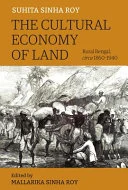The Cultural Economy of Land – Rural Bengal, Circa 1860-1940

Blurb
The Cultural Economy of Land is situated at two crossroads of agrarian history. The first is the cyclical seasonality of agriculture and the linear progressive time of technological innovation and political transformation; and the second is that of the economic and cultural meanings associated with land. Land acquires various dimensions beyond property, tenure, revenue, and inheritance if maps are connected with knowledge systems; land productivity with food habits, gender relations, and patterns of migration; landscapes with modes of irrigation and railroad construction; cropping patterns with festivals; village territoriality with social relations of power. This book is an attempt to bring out a multilayered pattern of rural life-world by, tracing on the one hand, major social and political changes, and, on the other hand, the everyday life of Birbhum district at a specific historical juncture.
Book summary
This book provides important insights into agrarian history and the economic and cultural meanings associated with land. Suhita Sinha Roy, who taught at various institutions in India, demonstrates how land acquires various dimensions beyond property, tenure, revenue, and inheritance, if maps are connected with knowledge systems; land productivity with food habits, gender relations, and patterns of migration; landscapes with modes of irrigation and railroad construction; cropping patterns with festivals; village territoriality with social relations of power. By making these connections, Roy brings out a multilayered pattern of rural life-worlds by tracing on the one hand, major social and political changes, and, on the other hand, the everyday life of Birbhum district at a specific historical juncture.

